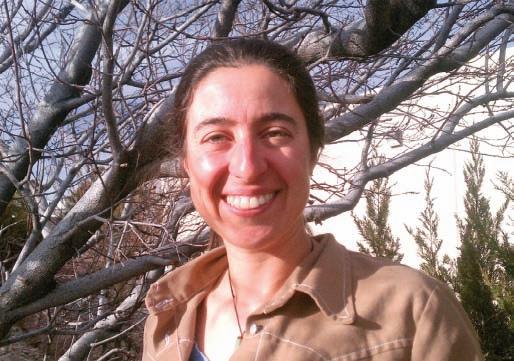
4 minute read
Green
from Feb. 28, 2013

PHO T O / A SHLE Y HENNEFER reinvent yourself
Advertisement
Tahoe’s sugar pines are important for local wildlife, says Sugar Pine Foundation development coordinator Tressa Gibbard.


Pining after

A resistant gene in some of Tahoe’s sugar pines may prevent further infection


Despite the density of many of Lake Tahoe’s forests, three of the regions’ trees— the sugar pine, western white pine and whitebark pine—are dying from by disease at a startling rate. The trees are infected with blister rust, a fungus
Ashley transmitted from Europe during seed exchanges in the early 1900s. The
Hennefer fungus ravages the branches and pine needles of a tree until it succumbs. ashleyh@ Blister rust has impacted forests in other western states including Oregon, newsreview.com Montana and Washington. “It has an over 40 percent infection rate,” says Tressa Gibbard, development coordinator for the Sugar Pine Foundation, a nonprofit based in Tahoe. Of the 40 percent that contract the fungus, 90 percent of them will die. “One in four of every tree in the Lake Tahoe basin is affected. So nearly all of our white pines are dying, whether or not they look like it.” The sugar pine has the largest pine cones in the world, and serves as a habitat and food source for local wildlife. The trees also help control snowpack on the mountains. Once a commonly found tree in the Tahoe basin—which includes Reno—much of the sugar pine species was cut down to be used for construction or mine timbering. “It’s excellent timber for mining,” Gibbard says. White pine bark is also known for aiding in fire suppression—a good option for deterring wildfires. “As sugar pines mature, they develop fire resistance,” says Gibbard. “This helps decrease the intensity of out of control wildfires.” Several years ago, the Sugar Pine Foundation and the U.S. Forest Service discovered that 3-to-5 percent of the pines have a natural gene resistance to the fungus. Once the resistant trees are identified, the cones are collected and raised to seedlings. The seedlings are then planted every spring and fall because “that’s when seedlings have the best chance” at surviving due to the moist and nutrient-rich soil, Gibbard says. The Sugar Pine Foundation and Forest Service began planting resistant seedlings in 2008, and the trees are monitored after six months to a year. Gibbard says
Learn more at most of the young trees are thriving. www.sugarpine To identify candidate trees, “We use a giant slingshot to catapult a foundation.org. rope over a branch,” says Gibbard. “Then we shake the branch to gather cones. We inoculate the seedlings, and once we know the resistant trees, we’re able to replant.” “As many cones as possible” are collected from the identified resistant trees and sent to nurseries in California, which cultivate the cones into seedlings and send them back to the Sugar Pine Foundation to replant. Gibbard says that last year, around 9,000 “proven resistant trees” were planted locally, including Lake Tahoe, Truckee and Reno. Reno residents can see the trees behind the Patagonia Outlet on White Fir Street. While it will take decades to determine the long-term impact of the fungus-resistant pines, Gibbard hopes that by planting new trees, locals will be able to stop the fungus from permanently damaging Tahoe’s ecosystem. “We’re just helping by speeding up the natural process,” she says. Ω
TAKE ADVANTAGE OF:

- Convenient Class Schedules - Limitless Career Opportunities - Learn from the Experts - Get into the Workforce Sooner
HAIR • SKIN • NAILS
NOW enrolling 855.598.4016
Financial Aid available to those who qualify
Accredited by NACCAS | Programs vary by location Career Placement assistance for graduates For Gainful Employment disclosures, visit www.marinello.com/disclosure
MRLO_11587_RenoNews-Reno_Feb_4.9x5.67.indd 1
RENO 5093 S. McCarran Blvd.
marinello.com
Defining Beauty Education Since 1905
RNR213RNO
2/4/2013 3:20:44 PM
Thursday, Feb. 28, 2013 | 7:30 p.m. | Nightingale Concert Hall
Charting what National Geographic calls “a new sonic frontier with deep ties to tradition,” internationally acclaimed Hawai’ian slack key guitarist/ singer/composer Makana is considered the youngest authority on his centuries-old art form and according to Esquire Magazine, “its greatest living player.” Makana is renowned among a diverse fan base, from his island neighbors to fellow guitar greats — Joe Satriani, Elliot Easton and Kirk Hammett have all praised his work — and recently, the White House. Tickets: Adult $24/ Senior $20/ Student and youth $12










